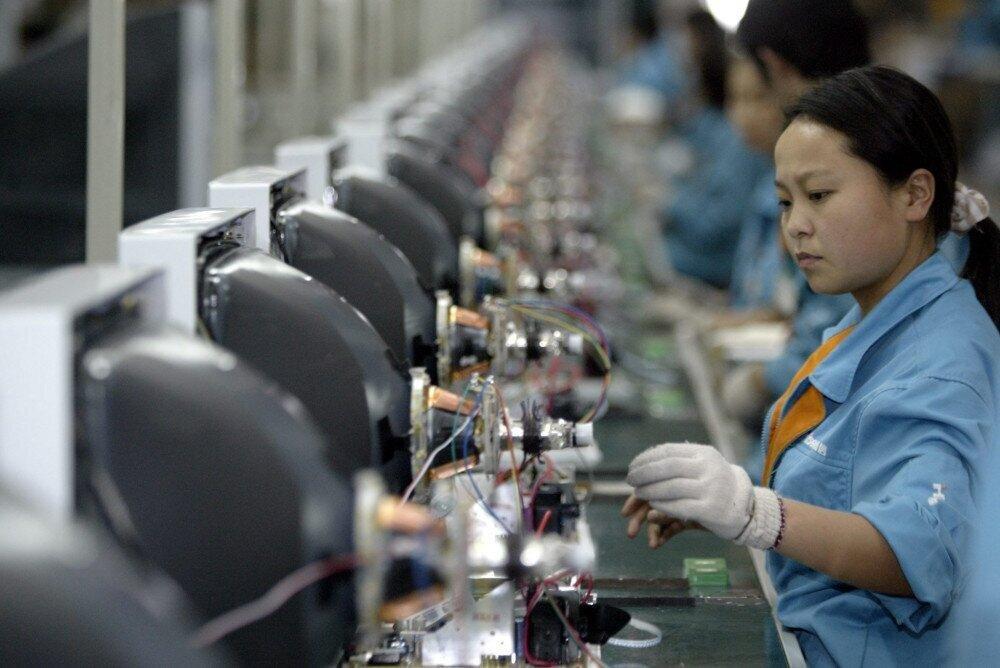World Bank slashes China’s growth outlook to 2.7 percent in 2022

As the pandemic and weaknesses in the real estate sector hit the second-largest economy in the world, the World Bank reduced its 2022 China growth forecast from 4.3 percent to 2.7% in a report released on Tuesday.
The World Bank stated in a report titled Navigating Uncertainty, China’s Economy in 2023 that in order to minimise further economic disruption and mitigate public health risks associated with the most widespread outbreaks since the pandemic began, China’s public health policies must continue to evolve.
Both short-term and structural factors have contributed to the rise in youth unemployment in China. The World Bank report, which was also released on Tuesday, states that youth unemployment increased disproportionately during the pandemic and reached almost 18% in October of this year.
The government’s policy response has also largely relied on short-term assistance, but more structural measures might be added to it. The introduction of public works programmes and employment subsidies by policymakers helped to mitigate the pandemic’s negative effects on the labour market.
The World Bank report stated that while these measures tended to be expensive and typically had minor long-term effects, international experience suggested they might be useful in supporting labour demand during downturns.
Covid-19 outbreaks and growth slowdowns, according to the report, have been followed by variable recoveries. The report states that after a decline in economic activity brought on by outbreaks and strict public health measures in April and May, the third quarter saw a rebound as the cases once more declined.
According to the World Bank, demand-related growth in the third quarter (Q3) of 2022 was widespread. Due to an increase in household disposable income, consumption increased by 2.1 percentage points year-on-year in the third quarter (Q3), compared to the first half’s 0.8 percentage points.
It claimed that while real estate investment continued to fall, manufacturing investment grew as a result of strong export performance and stimulus-driven infrastructure investment.
According to the report, domestic demand continues to be below potential due to ongoing Covid-19 outbreaks and related restrictions that have a negative impact on investor and consumer confidence.
According to the report, high Covid-related uncertainty caused consumption and investment growth to remain below pre-pandemic levels on the demand side. Consumption of services has been constrained by ongoing mobility restrictions, precautionary saving, and a bad wealth effect from the housing slump.

Industry grew more quickly than services on the production side. According to the report, the industrial sector increased its third-quarter growth contribution from 1.2 percentage points in the first half of the year to 1.9 percentage points.
China’s export growth momentum has also slowed in recent months due to weaker external demand, according to the World Bank. Although supply chains quickly returned to normal after the severe Covid-related disruptions earlier in the year, export momentum slowed down in the second half of the year amid weaker global demand.
Due to weak domestic demand, import growth remained sluggish throughout the year, according to a World Bank report. In the first ten months of 2022, imports only increased by 3.5% in US dollar terms, compared to 31.4% in the same period last year. The report states that, excluding price effects, imports decreased in volume terms, reflecting weak domestic demand in the midst of ongoing Covid-19 outbreaks and real estate market stress.
The World Bank warns of an impending wave of sovereign defaults by developing countries and has therefore called for an urgent overhaul of the system for dealing with unsustainable debts.
Some developing nations have found it challenging to make debt repayments in both foreign and local currencies due to an increase in borrowing costs on a global scale, the strength of the dollar, and high inflation.
The Washington-based organization’s chief economist, Indermit Gill, told the Financial Times in an interview that the current system for addressing unmanageable debt loads was no longer appropriate and also “needs to change.”
“We are applying a restructuring model that was also devised for another time,” Gill said, adding that the current system was “too lopsided” in favour of commercial creditors and “too little, too late” for countries that were in danger of default.
The pandemic and Russia’s conflict in Ukraine are just two of the crises that have strained public finances and caused countries to struggle more and more, according to the World Bank.
According to him, the issue must be addressed immediately because of the weak global growth. He added that debt restructurings “could be a train wreck” and that his best forecast for next year is now a third lower than it was a few months earlier.
Critics claim that in situations like Zambia, Sri Lanka, and Ghana—the most recent developing economy to experience default this week—efforts to address mounting debts have advanced too slowly.
The time between a problem developing and a solution can be very long, according to Gill. After going into default, it took Zambia almost two years to obtain an IMF loan.

The delays, according to Gill, were caused by the absence of a set of universally recognised standards. Gill also claimed that handling defaults and restructurings on an individual basis would lead to “the same problem five years down the road.”
We must adopt a consistent strategy, Gill insisted. If not, all you are doing is fiddling around and hoping the problem will go away.
According to him, relief must be substantial enough to put debtors on a stable growth path and ensure that all creditors bear the same burden.
The strategy for debt workouts used today was developed during the late 20th-century emerging market debt crises, when the majority of the debtors were western governments and commercial banks.
But since then, Saudi Arabia, China, and India have all grown in significance as sources of funding for underdeveloped nations. In the meantime, thousands of bondholders have taken the place of the previously involved banks.
What else is World Bank upto?
Additionally, the use of domestic institutions by governments as a source of funding has increased. About half of the public debt is owed to domestic lenders in both Ghana and Sri Lanka.
The proportion is much higher in other troubled debtors like Pakistan and Egypt. Any default raises the possibility of bank system chaos at home. The IMF and World Bank conduct a debt sustainability analysis to determine the extent of the issue before estimating the amount of debt relief required to resolve sustainability and put the debtor on a path to economic growth.
This is standard procedure for debt workouts. Then, the governments of the creditors decide how much relief they will offer; at this point, an IMF bailout is usually enabled. The process is complete when the debtor government is required to negotiate with its commercial creditors on terms that are equivalent to those provided to the official sector.
Large asset managers who speak for bondholders want to get involved in negotiations sooner.

Early in the pandemic, the G20 group of major economies, which includes China, India, and Saudi Arabia, made an effort to end the dominance of western governments in the debt resolution process. However, only three nations—Zambia, Ethiopia, and Chad—signed on to the framework created from their Debt Service Suspension Initiative, which ultimately failed to gain traction.
The biggest oversight in the new framework, according to Gill, was to allow commercial creditors to opt out of any debt relief process. This mistake ran the risk of preventing governments from accessing international capital markets.
He stated that a new system for debt workouts would need to acknowledge that “countries have market access” and “continue to have it.”




